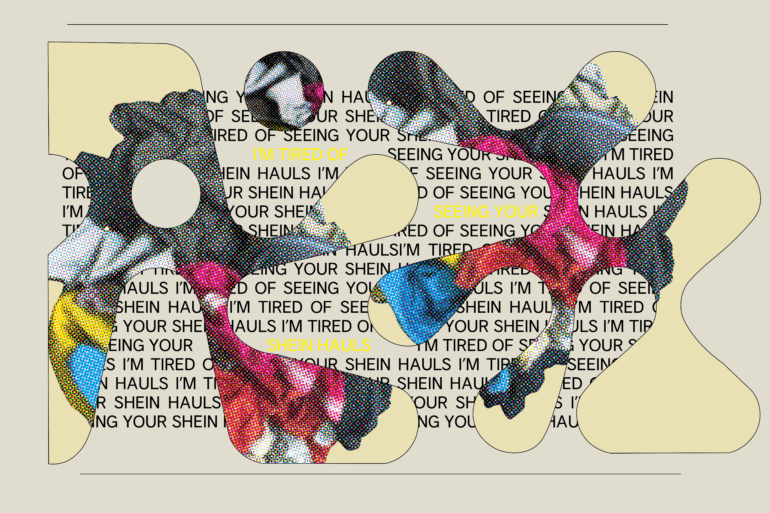If you’re like me and like to watch fashion TikToks, from analysis videos to trend forecasting, then you have definitely seen the viral trend of spending an immense amount of money (think $800 +) on fast fashion hauls for our viewing pleasure. But what confuses me is that I thought we were on the road to kill fast fashion?
If you type the #sheinhaul hashtag on TikTok, you’ll see an endless amount of conventionally wealthy young girls who are micro and macro-influencers posting what they got. The hashtag alone has generated 3.8 billion views, and some users have multiple-part videos because they bought so much they can’t fit it into one video. There are even Shein-fail videos and videos titled “Is it Worth It?” to see if the Shein items are the same quality that the website depicts vs. how they actually look. Spoiler Alert: Shein is fast fashion, so viewers shouldn’t be surprised that their new tops or pairs of shoes are poorly made.
It has also made me realize that since TikTok operates so quickly, these young influencers need to constantly crunch out haul videos left or right to keep up with increasing engagement. They are buying more and more clothing, resulting in disposing of their clothes that don’t meet their standards. These fashion influencers then get stuck into this vicious cycle of toxic consumerism. This leads to a downfall to overconsumption that once these influencers post their Shein “fail” videos, those pieces that don’t make the cut end up on racks at the thrift store, which is a placeholder until they get taken to a landfill.
In a Forbes headline, they state that “Gen Z Is Emerging As The Sustainability Generation,” and we all know that Gen Z is the first to raise red flags on inauthentic brands. I thought we cared about visibility and transparency? It seems that our generation is more polarizing, and the verdict is in: we love fast fashion just as much as we love slow fashion.
Not only are these young influencers promoting these fast fashion brands that aren’t transparent with their customers. They are responsible for making fashion trends cycle even quicker. It used to be a life cycle of twenty years. Still, in the digital age, it is impressive how quickly Gen-Z can make micro-trends go viral, but the issue arises that trends become more and more disposable as they cycle through quicker – quicker than Shein fails, ending up at the thrift.
That being said, the complete opposite side of the TikTok fashion community is embracing thrifting, small businesses, and finding our personal style. But that doesn’t mean the “ethical” side of fashion TikTok are complete angels either. There are fashion influencers who thrive off of thrift hauls and buying an immense amount of clothes for lesser the price of a Shein haul.
So, where does this lead us? The bottom line, overconsumption is an epidemic of the middle and upper class that can afford to buy clothes and make constant hauls for shock and entertainment. The reality of an “ethical” influencer does not exist, and social media only fuels the fire too spreading and creating trends that won’t even last a year! But what we can do to slow down is 1. Not excessively buy clothes, 2. Think about the brands we want to invest in and give our money to, 3. Be conscious of trends and think about the longevity of your clothes.
Words by Daniela Guevara.
Graphic by Emily Monet.

